Two years on, Ukraine is seeking the least worst option
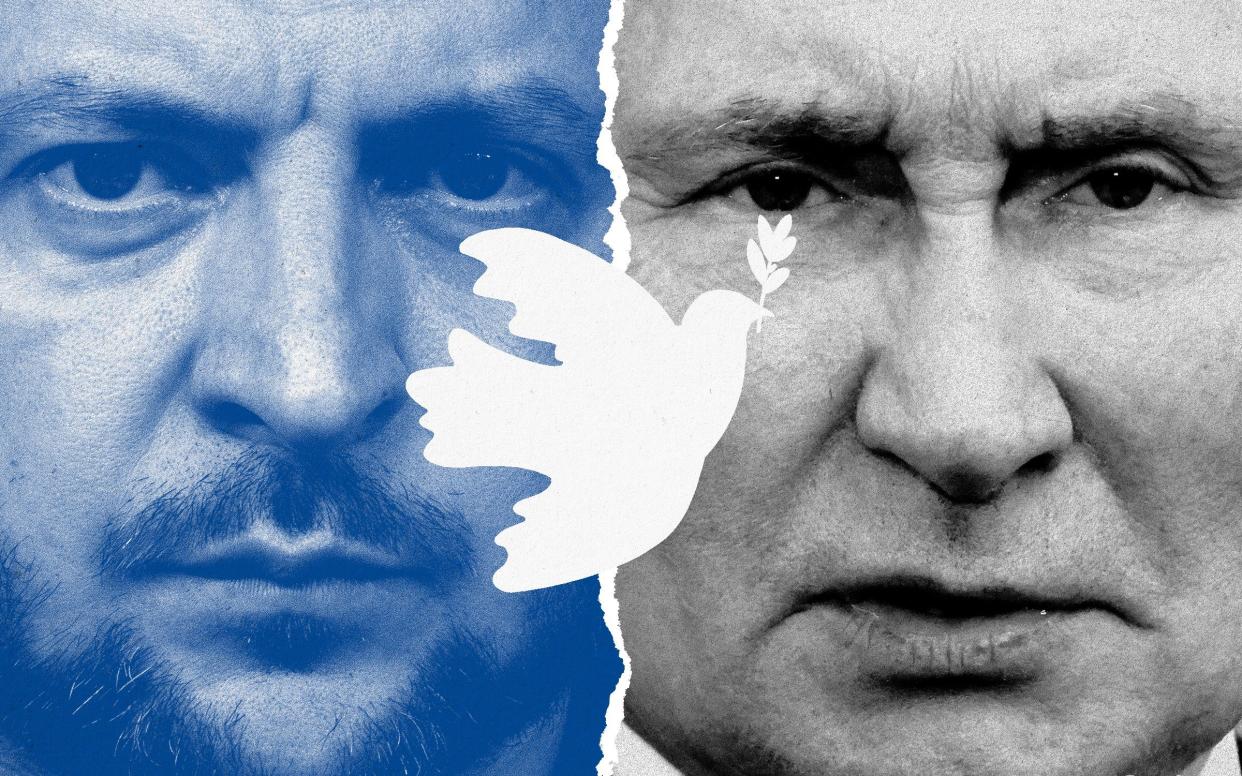
In the summer of 2022, I spent several days ringing acquaintances in Ukraine. The six-month anniversary of the full-scale invasion was approaching – a milestone few had imagined it would reach when the tanks first rolled in – and I wanted a sense of how they saw the war.
It was not an easy time. Kyiv had been saved, but Mariupol and Severodonetsk lost despite heroic last stands. There seemed to be no answer to Russia’s grinding artillery war in Donbas. And on the sun-drenched summer battlefields, everyone knew that the government would not talk about casualties because they were so horribly high.
Even so, everyone I spoke to believed Ukraine would win. The only question, people told me, was how long, and at what price.
This week, the war reaches another milestone – the two-year anniversary – and peace seems as distant as ever. But this time fatigue is much more palpable, and the mood has changed.
“It’s exhausting,” says Oleksiy Honcharenko, the MP for Odessa. “Everybody is thinking about just about one thing: to finish it and as soon as possible. But the most depressing thing now is that there is no light at the end of the tunnel.”
Ukrainians are familiar with exhaustion, and the emotional and psychological roller-coaster of defeat and victory. They’ve been through the mortal terror of the full-scale invasion in late February 2022; followed by the euphoria of victory at Kyiv a month later; the fall of Mariupol two months after that; then victories in Kharkiv and Kherson in late 2022; followed by the bloody loss of Bakhmut last year.
Now feelings on the frontline are as bleak as they have ever been.
Last summer’s offensive, which was meant to force Vladimir Putin to the negotiating table, failed. Russia has regained initiative along the entire length of the 600-mile front. Political hostage-taking in Washington has choked off crucial American arms supplies, and Britain and Europe, despite promises, are not yet producing enough to fill the gap.
The fall last weekend of Avdiivka, a Ukrainian stronghold in the east of the country that had defied capture for eight years of low-level war after Russia seized Crimea and the Donbas in 2014, and two years following the full-scale invasion, was a direct result.
The situation on the front is desperate. Troops in Donetsk region told The Telegraph this week that they cannot fire even when they have the Russians in their sights. Instead, starved of ammunition, they describe being forced to choose which village to pull back from next.
Such scenes have galvanised soul-searching among Ukrainians – and their Western allies – about how, if at all, the war can be ended.
The four options
Donald Trump has said he could end the war in 24 hours – presumably by making a deal with Putin at Ukraine’s expense.
Volodymyr Zelensky, Ukraine’s president, rebutted that last week, saying there is no way Mr Trump could simply solve the conflict and invited him to the front lines to see why.
The Russians have dangled the prospect of talks, but say their aims have not changed and still intend to take Kyiv. And the Ukrainian spirit of defiance, for all the country’s suffering, is far from dead. It is easy to find people as furiously angry as they were two years ago.
“I think we are going to be even stronger than before to fight with our enemies,” Katya Zharova, a lawyer from Kharkiv, told me after her apartment was blown to smithereens by a Russian missile in January.
“Those were the first words my husband said after the shelling. I can admit I was very angry also. It was like we looked in the eyes of your enemy. We must continue fighting.”
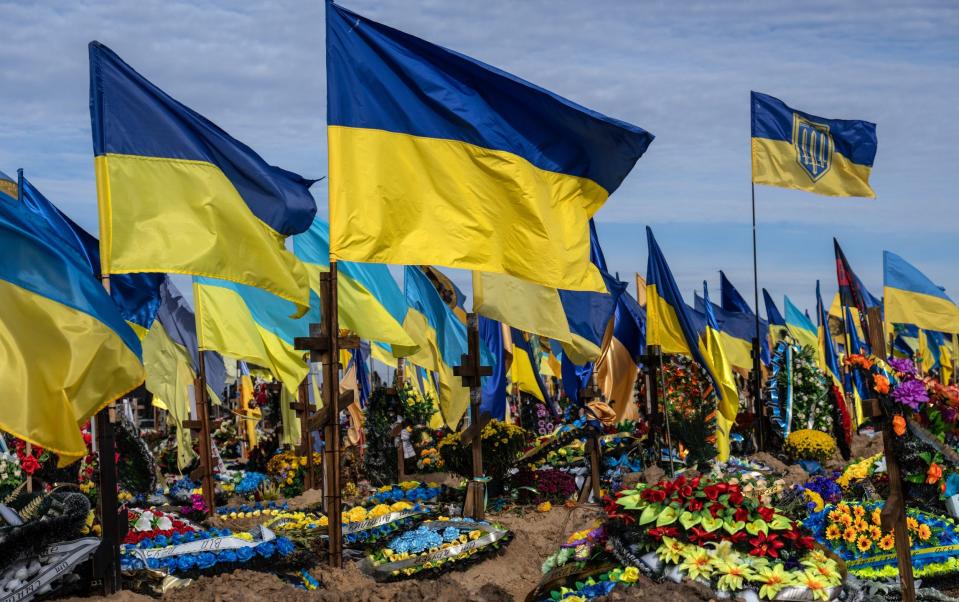
“Everyone is tired, everyone is scared, everyone is angry. Even without money and without weapons, we will fight with sticks,” was how Nikita Ruzhenko, a soldier from the same city, describes the mood.
That, said Mr Honcharenko, is a resilience born of being in a corner. “People clearly understand that Russians will commit genocide against Ukrainians on the occupied territory. They will just kill us.”
Chatham House, Britain’s semi-official foreign affairs think tank, this month held an exercise modelling four basic scenarios for an end to the war: a Ukrainian victory, a Russian victory, a deal or some kind of stalemate.
It can be reported without breaking the institute’s famous rule that all variants seemed a long, long way off.
The first option – a Ukrainian victory – is best articulated in a 10-point peace road map laid out by Mr Zelensky in 2023, and which he and Ukrainian diplomats continue to explain at every opportunity.
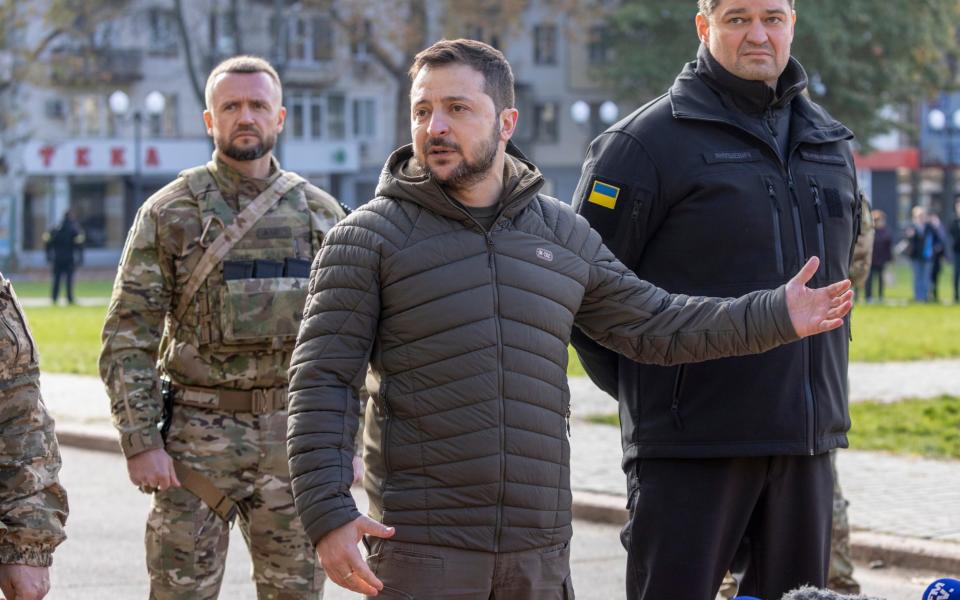
It begins with confidence-building measures like establishing nuclear safety, restoring grain exports and releasing prisoners, and ends with Russia withdrawing its forces from the entirety of Ukraine, including Crimea and the parts of Donbas occupied in 2014, paying reparations, and agreeing to subject suspected war criminals to prosecution.
Peace would be underwritten by international security guarantees – probably Ukrainian Nato membership – which in turn would lay the ground for a formal cessation of hostility signed by both governments.
That plan, widely supported in Ukraine, faces two major stumbling blocks. The first is that it was premised on inflicting a devastating blow against Russia on the battlefield. With the failure of the counter-offensive, the prospect of military victory has been at the very least significantly postponed.
The second is that liberating territory will not in itself win the war if it merely pushes the front line back to the internationally recognised border (itself a very tall order). There must be some way to persuade Russia to stop fighting.
Plan B
That’s why some in Ukraine are now cautiously airing an alternative plan.
“The previous strategy we had in 2022 and 2023 was widely accepted and supported. [But] now it doesn’t look very realistic. So people want to know, what is our plan B, I think that’s important,” says Mr Honcharenko.
“There are really two wars. The first war is for Ukrainian independence, and this war is already won in the spring of 2022. The second war is for Ukrainian territorial integrity. And history shows us that these wars can last for years, and maybe even decades, and we don’t know when it will finish.
“So we’ve been saying [so far]: first, restoration of territorial integrity and then membership in Nato. I think it’s not the right sequence. I think the right and more realistic sequence should be membership in Nato, now, for Ukrainian-controlled territory. And as a result of this, in some time, full restoration of our territorial integrity.”
In unvarnished terms, this is a proposal to trade land for peace. Ukraine would renounce attempts to liberate the occupied territories by force in exchange for Nato membership which in itself would guarantee that Russia could not risk attacking again.
The result would be peace: imperfect, heavily armed, always at risk of breaking down, but peace nonetheless.
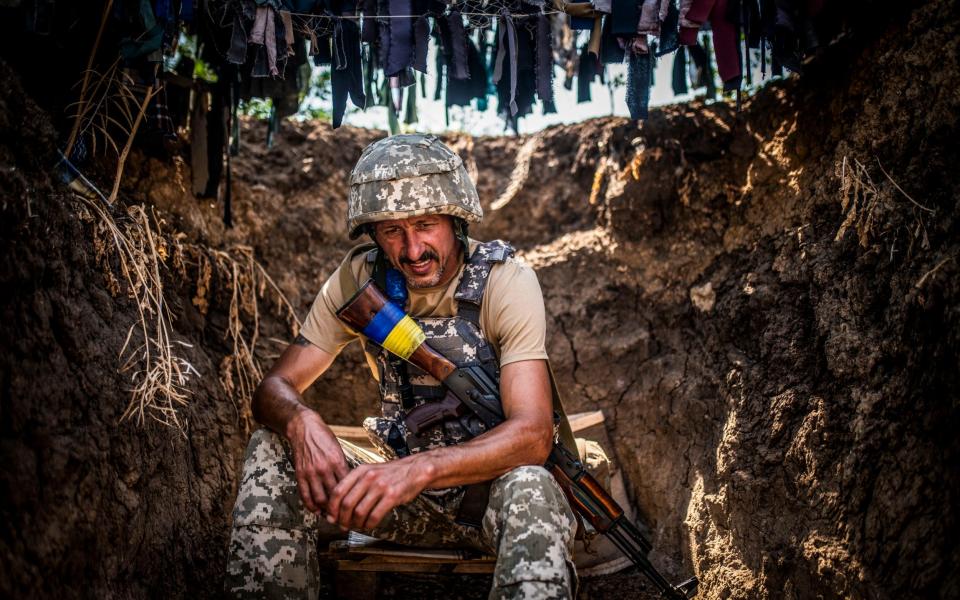
There are all kinds of precedents for such an imperfect settlement. The division of Cyprus, the 1953 armistice in Korea, even the partition of Ireland in 1921 all come up in conversation.
The example many prefer to point to is West Germany because it joined Nato in 1955 despite refusing to recognise the sovereignty of the Soviet-occupied German Democratic Republic. The West German precedent overrides objections to admitting a country with an active territorial dispute – and also underlines the possibility of eventual reunification.
“Yes, this can take years,” concedes Mr Honcharenko. “That’s the reality. But we will use the time to rebuild the country and prepare ourselves [for reunification].”
This was until recently a risky thing for a politician to say publicly. The official position in Kyiv was, and remains, that Ukraine will not trade land for peace – or even land for Nato membership.
But the notion is gaining traction. Mustafa Nayyem, the head of Ukraine’s state agency for restoration and infrastructure development, told The New Yorker last month that such an idea “made sense”.
For those advancing this argument, the critical issue is not the land – it is having a cast-iron guarantee that this war will never be fought again.
Full Nato membership, and with it the umbrella of the alliance’s Article Five mutual defence clause, is the only deterrent that would fit the bill. It is that protection that, in Mr Honcharenko’s words, allows him to relax knowing his children will not have to fight the war again.
Anything less would be no more convincing than the Budapest Memorandum of 1994, in which Russia, the US and the UK offered security guarantees in exchange for Ukraine surrendering its nuclear arsenal.
“It would just be prolonged killing. It would be better for us to just keep on fighting,” says Mr Honcharenko.
Hot peace
Yet the aimless “just keep on fighting scenario” is something few wish to admit to, even if it is the day-to-day reality. General Valerii Zaluzhny, the former chief of the Ukrainian armed forces, lost his job partly because he gave an interview last November describing the war as “a stalemate”.
That irked Mr Zelensky because it implied, like a game of chess ending in a draw, that there was no victorious way out. Mr Zaluzhny’s defenders say it was a mistranslation – he really meant a deadlock, which would eventually be broken by one side or another through attrition or innovation.
And Russian success on the battlefield over the past week is a powerful illustration of what happens when one side begins to gain an upper hand.
Analysts do accept the possibility that, eventually, “exhaustion might win”, forcing both sides to a long-term standoff. But that is very different to the security of an internationally guaranteed land-for-peace deal. For one thing, it will not end the war. Instead, Ukraine and its allies would have to live in permanent readiness for renewed hostilities – not so much a Cold War as a Hot Peace.
Russia’s scrambled picture of victory
At the other extreme stands the Kremlin, which insists its war aims have not changed, but also claims it has always been open to talks without saying what it might be willing to negotiate on.
The Kremlin has put forward so many justifications and goals for the war since it began, it is difficult to discern what its picture of victory looks like. In December 2023, Putin reiterated on national television the goals of “denazification, demilitarisation and its neutral status” of Ukraine.
But he began the war expounding pseudo-historical arguments claiming Ukraine does not really exist. In spring 2022, he set the significantly more limited goal of “liberating” the Donetsk and Luhansk regions.
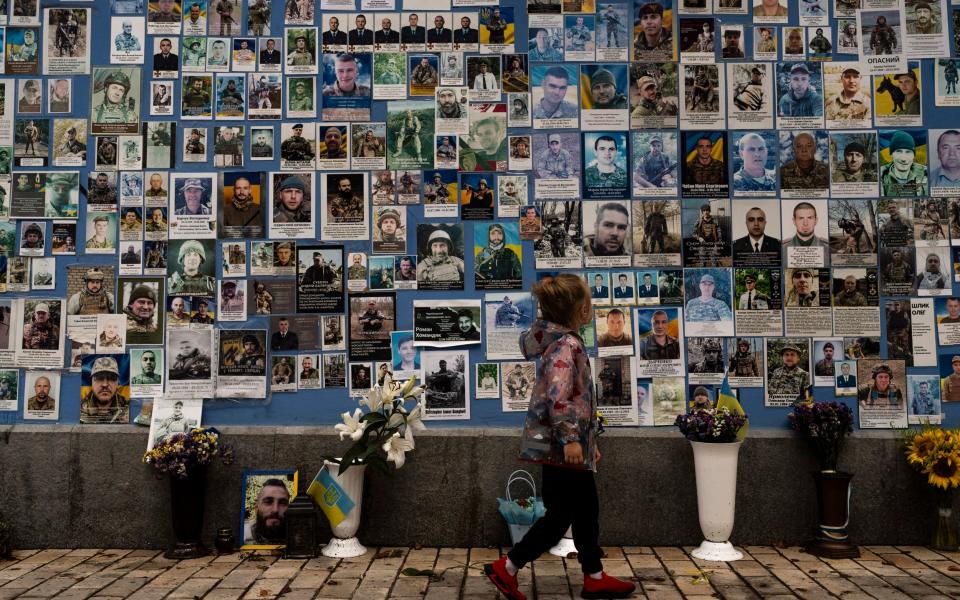
More specific goals can be gleaned from a recent assessment by the Royal United Services Institute, a think tank close to the British armed forces and intelligence services, which reported that Russian intermediaries are currently proposing that Ukraine cede the territory already under Russian control plus Kharkiv and possibly Odessa, agree not to join Nato, and appoint a head of state approved by Russia.
The one concession is that the rump of Ukraine that remains could join the European Union.
Those goals have not been articulated publicly, and it is quite possible that they may contract or become even more ambitious.
But the gulf between that and what the most conciliatory Ukrainian official is prepared to contemplate is too vast to contemplate.
What does the West want?
In July 2022, I was among a small group of journalists summoned to a room in London where a senior Western official explained that those who count in the White House “haven’t reached a settled view, even on which scenarios they want to concentrate on, let alone what the outcome of those various scenarios might be”.
There was, the official went on, no US or Western preferred outcome “other than that there should be a ceasefire and the resolution starts with withdrawal”. “Nothing is off the table,” including the possibility of Russia hanging onto the territory it had captured.
Five months into the biggest war in Europe since 1945, that seemed strange.
Two years in, there still does not seem to be a commonly articulated goal.
Ukraine’s most powerful allies have avoided fully endorsing Mr Zelensky’s 10-point road map, but they’ve never come up with an alternative.
“I am actually monstrously horrified,” said Mark Galeotti, a specialist in Russian history and security affairs who is sometimes called on to advise European governments, “at how stupid so much of this discussion is and how much it still seems to rely – even behind closed doors – on these empty mantras and terms that don’t have any real meaning. Like what are the terms of victory and defeat?”
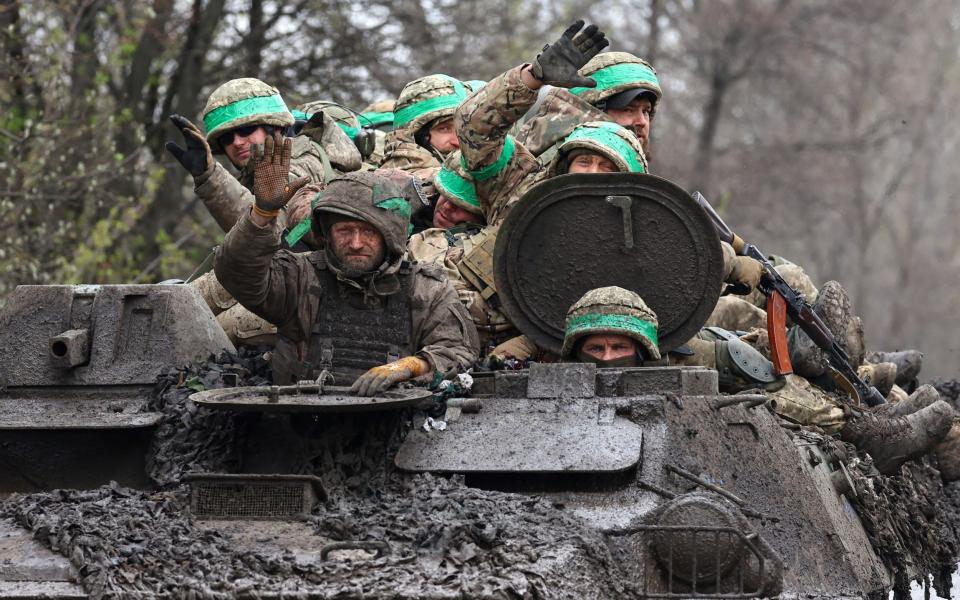
That is partly down to divisions within the alliance about what a favourable outcome looks like.
A few, notably Hungary’s Viktor Orban - insist victory is impossible and advocate an immediate ceasefire and peace talks - the obvious implication of which is a settlement favouring Russia. Hungary said it supports Ukrainian sovereignty but also avoided any condemnation of the Russian invasion in its statement on the anniversary of the war.
Other governments have been cautious about extending Nato membership to Ukraine or the fallout of a catastrophic Russian defeat. British officials say they firmly want an unambiguous Ukrainian victory, but are reluctant to discuss the specifics.
No one can be sure what the Americans will do at the moment.
Mr Galeotti, who is critical of calls for “total defeat” of Russia as unrealistic, argues that planning is crucial because there are worlds of difference within the potential terms of a deal.
The kind of settlement Russia seeks, with Ukraine denuded of Odessa and Kharkiv and locked into unending “neutrality”, is quite different from the model Mr Honcharenko proposes.
Mr Honcharenko is right, argues Mr Galeotti, that the Nato security guarantee must be central.
“Even if we actually mean it when we say ‘you know, it’s not in Nato but we absolutely would, would, would be willing to intervene to support Ukraine’, the fact is it would not be credible. I think it would actually be a lot more dangerous because then the Russians would be far more willing to try something on the assumption that actually we wouldn’t follow through.”
In the absence of strategy, war
Neither side is remotely close to accepting the other’s ultimatums. And that is why both sides know peace terms will really be dictated on the battlefield, and that there are probably at least two more years of fighting to go.
Putin’s strategy appears to be to wait at least until the election in the United States this November, when he hopes a Donald Trump victory will collapse US support, split the West, and ultimately sap Ukraine’s ability to resist altogether.
With the Ukrainian armed forces starved of ammunition, Russian forces on the ground will make battlefield gains in 2025, ultimately forcing Mr Zelensky to accept peace on terms dictated in Moscow.
The timeline for this Russian strategy, according to the Rusi assessment published last week, is to achieve victory by 2026. It is a credible plan, but it depends on things going Russia’s way in Washington, and Ukraine not finding other ways to fight back.
And if Ukraine doesn’t fold, Russia may have missed its best opportunity to enter talks from a position of strength.
Ukraine and the West are not without their own strategy – or at least a slowly congealing consensus about the least worst course of action.
It goes like this: Ukraine will spend at least the rest of 2024 on the defensive, wearing down Russian forces on the battlefield, while trying to minimise its own losses and digging defensive lines similar to those used so effectively by the Russians last year.
Meanwhile, the West will ramp up military production and rearm and retrain Ukraine’s troops not only to resist Russian offensives but eventually seize back the initiative in 2025.
New opportunities may then emerge to force the Kremlin to bargain on favourable terms. Again, we are realistically talking about 2026 before a resolution is near.
It will require a great deal of tenacity. Much will depend on the choices made in the US in November. And Ukraine would have to grasp the thistle of expanding the draft to keep its army in the fight.
The light at the end of the tunnel continues to recede.

 Yahoo News
Yahoo News 
